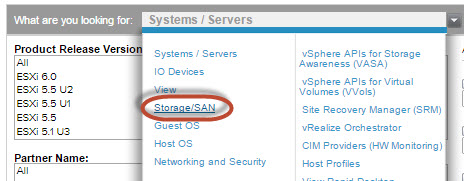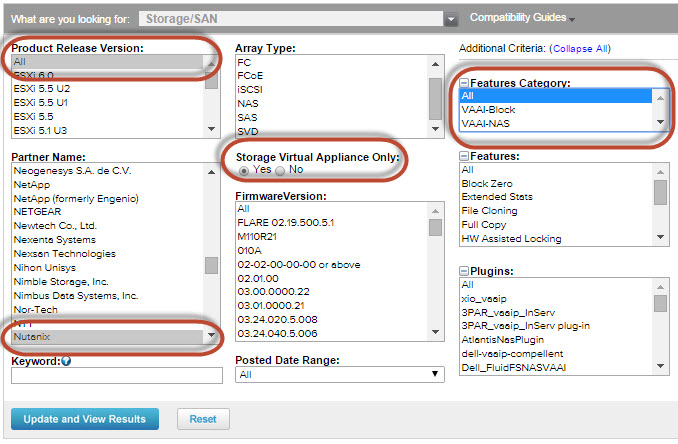Recently it seems the spreading of Fear, Uncertainly and Doubt (FUD) about Nutanix has ramped up, probably due to Nutanix ongoing success and enormous growth.
Still It’s unfortunate when large companies, and especially people in senior positions at these companies try to bully smaller companies. Luckily at Nutanix, we’re like HoneyBadgers, and we don’t care. We Hyper-converge anyway!
While this sort of attention is expected when you work for a disruptive start-up who according to independent sources such as IDC, put Nutanix as the hyperconverged market leader with 52% market share.
However when the FUD creates confusion for customers, that’s where it crosses the line and I need to correct the misinformation for the benefit of the customers, which is what Nutanix focus is, the customer experience.
The specific FUD I am talking about which was chucked around the blog/twittersphere in the last 24 hours is as follows:
- “… Nutanix is not entitled to support VMware customers”
- “Any support you (Nutanix) provide is not “Official”
- “Your (support) model puts customers in a grey area”
- “Nutanix (is) providing unofficial customer support for both VMware and Nutanix”
- “Nutanix should be transparent to customers regarding what services they are entitled to provide, and which ones they aren’t”.
How would I describe the above comments, simple: Total Bull (shit)!
Now, that made me think of an Australian company (Pedders – logo below) who made the term “No Bull” famous with a series of TV commercials about car servicing and suspension. The ads made light of car mechanics who overcharge people for unnecessary work on vehicles, and making the point Pedders giving the right advice and “No Bull”.

So this post is inspired by Pedders and is about giving you the facts, and No Bull (Shit)!
So is Nutanix a supported platform for vSphere? YES!
How do I know this, I personally completed the hands on certification work and submitted the successful certification logs to VMware prior to them being approved. In fact, I am still involved in keeping our certifications up to date.
But if you don’t believe me, its easy enough to verify. All you need to do is check the Official VMware Hardware Compatibility List (HCL).
To do this simply visit http://www.vmware.com/go/hcl and select Storage/SAN as shown below.

Next select the following:
- Product Release Version : All
- Partner Name : Nutanix
- Storage Virtual Appliance Only : Yes
- Features Category : All

Hit Update and View Results and you will get a view like the below.
The above shows all Nutanix node types from the NX1000 series all the way to our All-Flash NX-9000 series with support for vSphere 5.1 through vSphere 6.0.
If you check on one of the node types you will see Nutanix is also supported for VAAI-NAS, and as I highlighted in my post “Not all VAAI-NAS solutions are created equal“, Nutanix supports all 4 VAAI-NAS primitives, not a subset which is common especially in the hyperconverged market.
Note: Some HCI solutions have no VAAI support at all!
So with a quick check of the VMware HCL, we all can see Nutanix is a fully certified and supported solution by VMware Global Support Services (GSS).
What does this mean?
Put simply, Any Nutanix customer with up to date Support and Subscription (SnS) can call VMware GSS directly and get support.
Nutanix customers are also welcome and encouraged to contact Nutanix directly. As a result, customers get the best of both worlds, or choose which vendor they call based on the quality of support.
What does Nutanix support provide?
End to End support including (but not limited too):
- The Hypervisor (ESXi, Hyper-V or KVM)
- The Nutanix layer
- Performance troubleshooting
- Networking support
- Application support such as MS SQL / MS Exchange / Oracle etc
So Nutanix support is really a “One throat to choke” service.
Not only is our service “One throat to choke”, Nutanix also has one of, if not the highest Net Promoter Score in the I.T industry, with a score of +88 out of a scale of -100 to +100.
I challenge anyone to show me a company with a better NPS in the I.T industry!
Nutanix System Reliability Engineers (SREs) are more often than not Level 3 engineers. Nutanix does not hire the typical Level 1 engineer who essentially just takes a phone call and needs to escalate most calls to another engineer.
Nutanix has numerous VCAP level certified support engineers, as well as the ability to call on one or more of our 12 VMware Certified Design Experts (VCDXs) if/when required. I personally have been involved in numerous escalations, in some cases I have travelled to customer sites to investigate and drive to successful resolution of non Nutanix issues such as hypervisor bugs. The escalation was done free of charge, to ensure our customers have the best experience possible.
In the event Nutanix support finds a problem with something which is not Nutanix, such as a Hypervisor bug, we don’t hand you off to another vendor, we log the bug on your behalf, manage the case with the Hypervisor vendor and follow it through to conclusion.
To be clear, Nutanix is not an OEM partner of VMware, nor do we ship ESXi with our platform. Does this matter? Not at all. What it does mean is the support costs customers pay to VMware are not shared with Nutanix, that’s all.
Nutanix can and does provide support for vSphere, just as Systems Integrators (SIs), managed service providers and other non OEM VMware partners do.
To cover unusual situations, Nutanix is also member of TSAnet which is a multi-vendor support network along with Microsoft, VMware which ensures even in the event your problem is not strictly covered by a support contract, or its not a supported configuration, Nutanix will make every effort to ensure the problem is resolved directly with the other vendor/s via TSAnet.
This post was brought to you by my two favourite Chuck’s, and “No Bull”!







